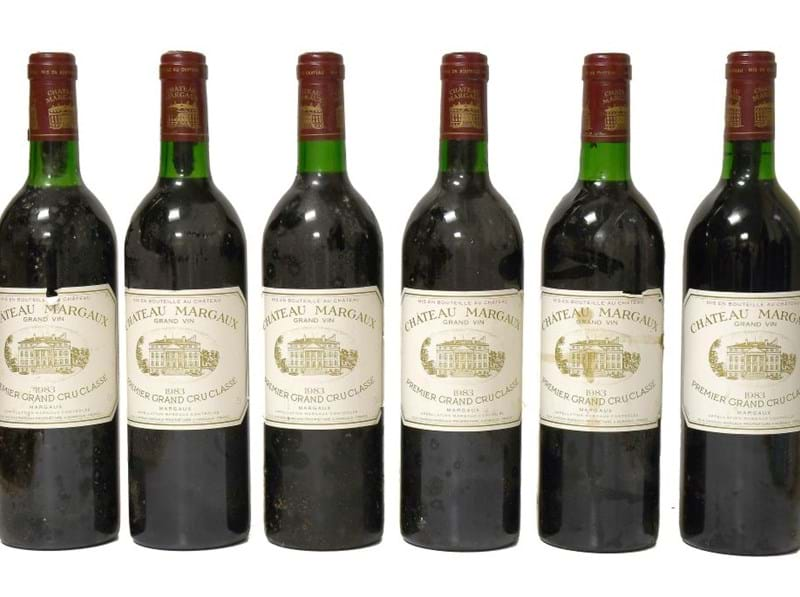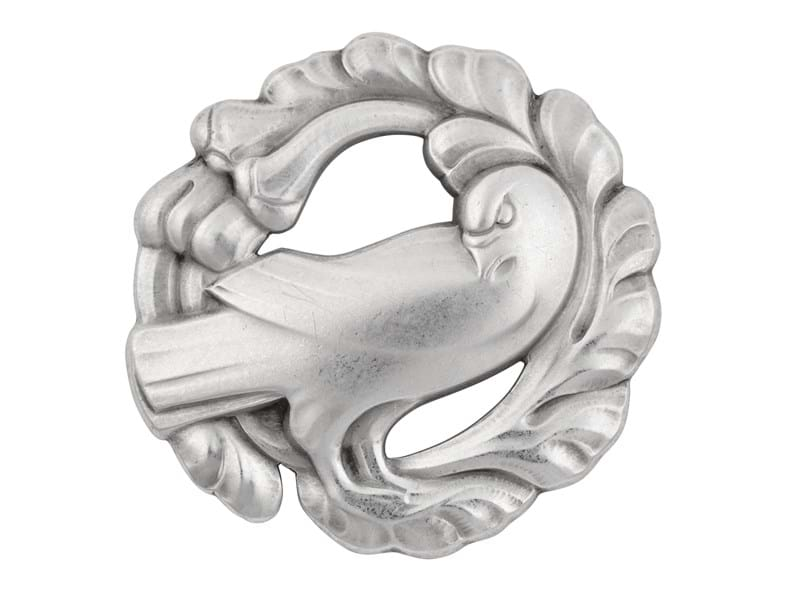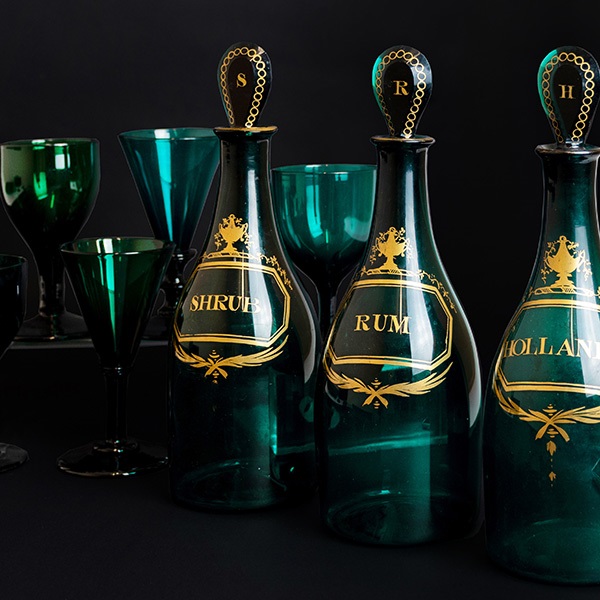The Jewellery, Watches and Silver Sale on 16th September includes several interesting pieces of jewellery with animal or insect motifs, which provides an excellent opportunity to briefly consider the popularity of such pieces through history.

A Victorian Ruby, Sapphire, Diamond and Split Pearl Butterfly Brooch
set throughout with round and oval cut sapphires and rubies, split pearls and rose cut diamonds, in white and yellow claw settings
measures 4.4cm by 3.1cm
£400-600
For many ancient civilisations, jewellery was more than simply decoration or adornment. As well as carrying religious connotations, jewels were worn to ensure good fortune and/or to ward off evil spirits. Different colours, animals or symbols were thought to bring certain benefits or effects to the wearer, founded on superstition or spiritual beliefs.
Fast forward to the Renaissance when animal jewels were popular once again, with elaborate creations sometimes built around a baroque pearl that was used to form the main body of an animal, with gold or silver work, enamel and gemstones used to create the finer shape, structure, and details.
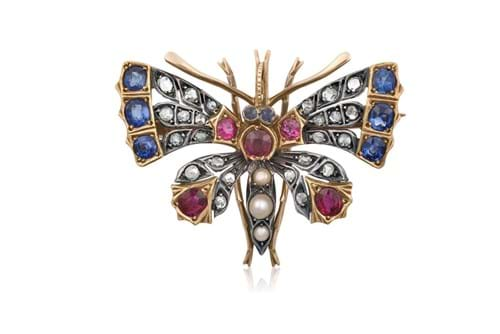
A Victorian Ruby, Sapphire, Diamond and Split Pearl Butterfly Brooch
set throughout with round and oval cut sapphires and rubies, split pearls and rose cut diamonds, in white and yellow claw settings
measures 4.7cm by 3.5cm
£500-700
On to the Victorian era where once again novelty animals, particularly insects, were in fashion. A prolific motif in jewellery of the 1860s-1900s, insects would perch on bar brooches, dangle from neckwear, be worn as earrings, sometimes appear on rings or fashioned into hair pins (perhaps on the end of a spring, en tremblant), and for the wealthier individual even form part of a tiara.
Today, the insect motif has become synonymous with Victorian jewellery, but why was it so prolific? The trend is thought to have begun with the bee. Perhaps the worker bee was symbolic of the industrial revolution and large-scale development, both of which impacted significantly on traditional workers, the emerging middle classes and the wealthy industrialists. From bees the fashion extended into flies, beetles, and even earwigs and snails. Part of this theory is that the mass industrialisation drove more and more rural workers to cities to seek work or wealth, creating a nostalgia or wistfulness for the countryside, and flowers and insect designs were a way of remembering and feeling connected to their past.
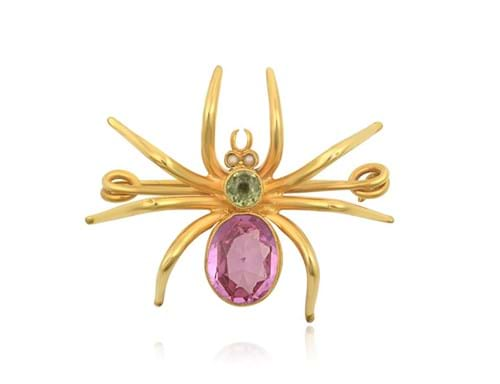
A Peridot, Pink Stone and Split Pearl Brooch
realistically modelled as a spider, comprising of an oval cut pink stone body, a round cut peridot head and split pearl eyes, in yellow millegrain settings, with plain polished legs
measures 3.5cm by 2.9cm
£200-300
Another view is that many Victorians were preoccupied with death, the afterlife and the macabre, and perhaps the slight gruesomeness of bugs sparked their interest. To shock and fascinate was the aim of many, and using jewellery that could repulse or offend was one way to achieve this. Some people even wore live bugs contained in miniature cages about their person. For those who felt that was a stretch too far, other jewellery was made from insect parts. In the late 19th century brightly coloured beetle shells from Brazil were a popular component of jewellery. The shells might be used whole to create a scarab form or crushed to be used as an iridescent colour. Real butterfly wings were also used in jewellery and hair ornaments.

A Synthetic Ruby, Purple Stone and Split Pearl Brooch
realistically modelled as an insect, with an oval cut and cushion cut purple stone body, round cabochon synthetic ruby eyes, and wings set throughout with split pearls, in yellow claw setting
measures 5.6cm by 2.2cm
£250-300
Running parallel to the macabre in the Victorian mindset was the increased interest in exploring the natural world for both scientific and aesthetic purposes, exemplified in the world of fine art by the Pre-Raphaelite movement. Studying the beauty of the natural world was key and these principles sometimes crossed over to jewellery design. The many colours and tones of a beetle scuttling in the sun, or the contrasting textures of a dragonfly’s lacy wings and velvet-like body presented a tempting opportunity to invent new techniques to imitate nature, to put materials and textures together that perhaps hadn’t been seen before. In this sphere, the jewels were less about capturing the image of a creature and more about capturing its essence in a jewel.
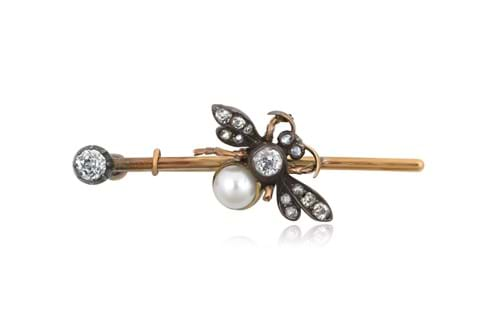
A Victorian Diamond and Split Pearl Brooch
realistically modelled as an insect, set throughout with a split pearl and old cut and rose cut diamonds, in white collect settings, on a yellow plain polished bar terminating at one end with an old cut diamond similarly set, total estimated diamond weight 0.40 carat approximately
length 3.9cm
£150-200
To find out more about buying or selling Jewellery at Tennants, please contact the Jewellery Department








